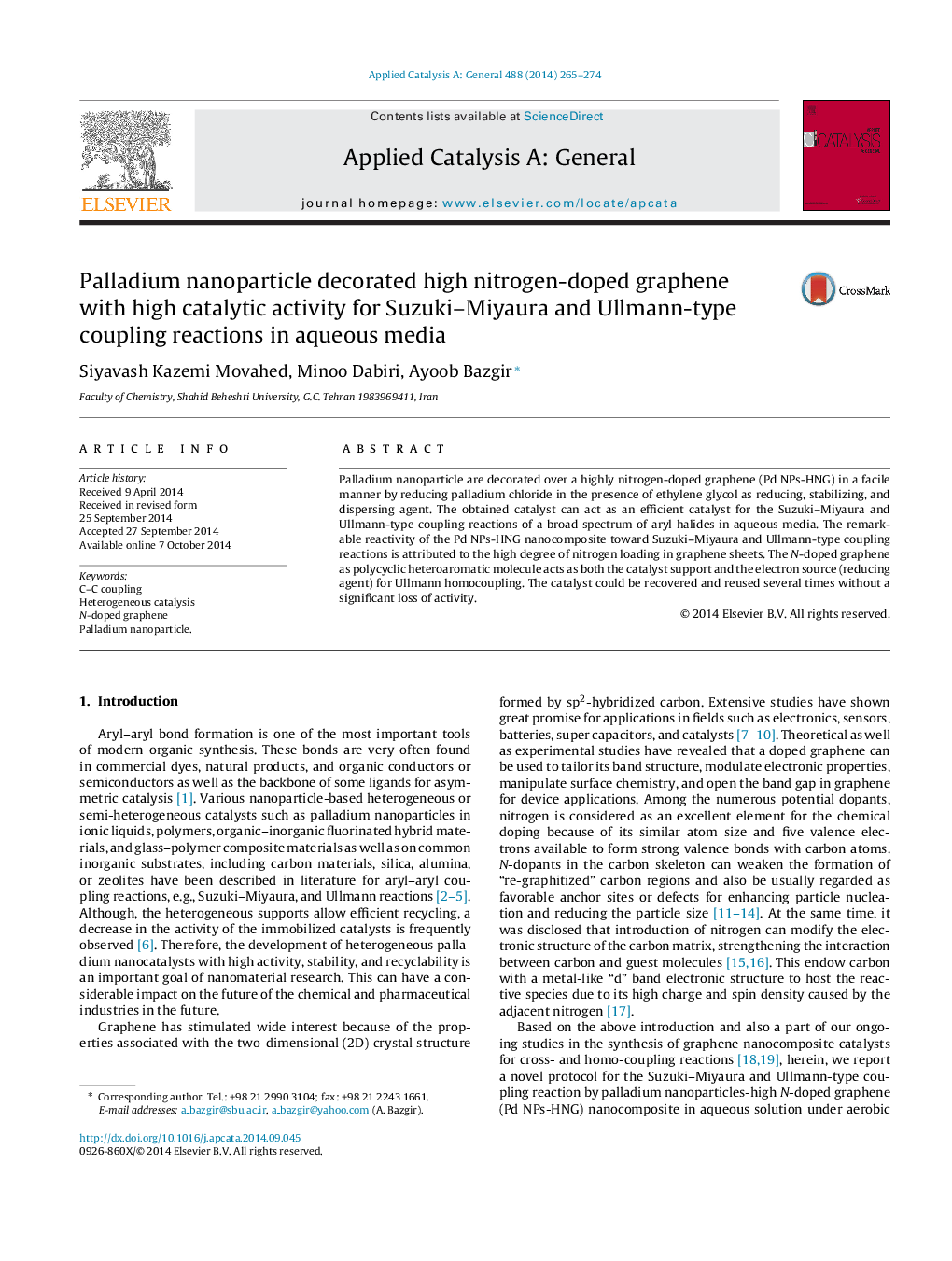| Article ID | Journal | Published Year | Pages | File Type |
|---|---|---|---|---|
| 39515 | Applied Catalysis A: General | 2014 | 10 Pages |
•Pd nanoparticle decorated on high nitrogen-doped graphene.•Catalytic activity correlates with concentration of nitrogen in graphene sheet.•Pd NP-HNG catalyst highly active for carbon–carbon coupling reactions.•Ullmann homo-coupling of aryl halides without any external reductant in water.•EDS, Raman, SEM, TEM, XRD, and XPS characterization.
Palladium nanoparticle are decorated over a highly nitrogen-doped graphene (Pd NPs-HNG) in a facile manner by reducing palladium chloride in the presence of ethylene glycol as reducing, stabilizing, and dispersing agent. The obtained catalyst can act as an efficient catalyst for the Suzuki–Miyaura and Ullmann-type coupling reactions of a broad spectrum of aryl halides in aqueous media. The remarkable reactivity of the Pd NPs-HNG nanocomposite toward Suzuki–Miyaura and Ullmann-type coupling reactions is attributed to the high degree of nitrogen loading in graphene sheets. The N-doped graphene as polycyclic heteroaromatic molecule acts as both the catalyst support and the electron source (reducing agent) for Ullmann homocoupling. The catalyst could be recovered and reused several times without a significant loss of activity.
Graphical abstractFigure optionsDownload full-size imageDownload high-quality image (164 K)Download as PowerPoint slide
